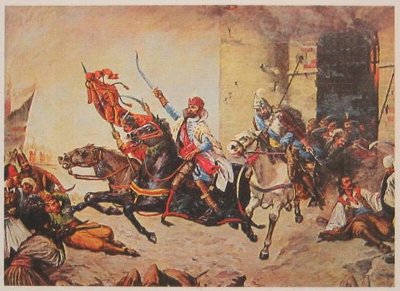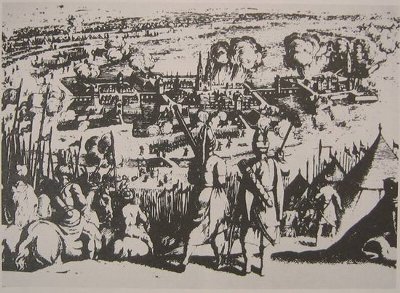 | Dr. Hrvojka Mihanović-Salopek prepared already her tenth DVD covering various aspects of extremely rich mariological heritage among Croatians. This DVD refers to the Varaždin Bishopric on Croatian north. Numerous baroque churches, lavishly decorated by Ivan Ranger and other Baroque artists, provide a special touch into the architecture of the city of Varaždin and surrounding towns and villages. A special emphasis is placed on the natural beauties of the region, liturgical and folk melodies, as well as on centuries old Croatian literature. |
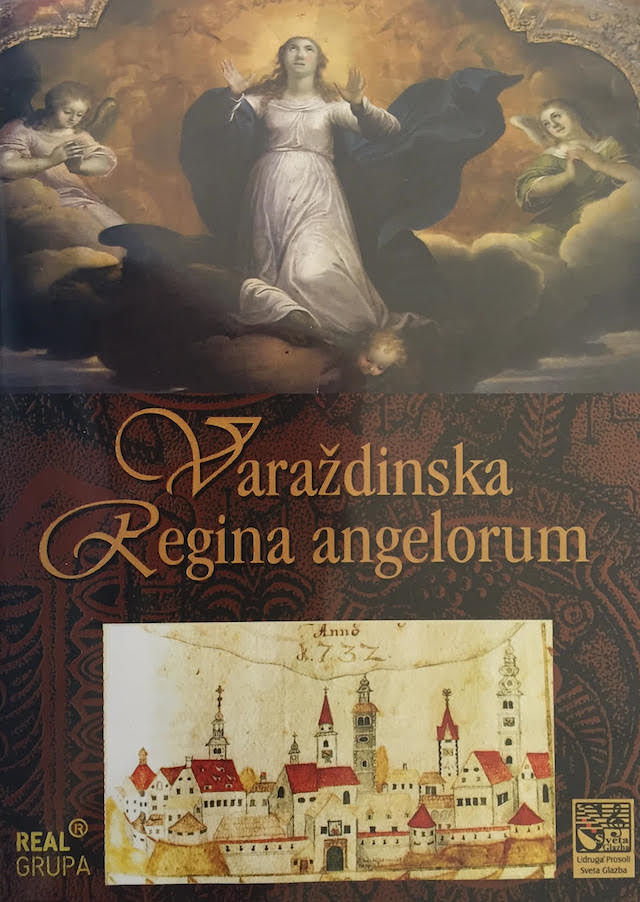
The project director was Dr. Hrvojka Mihanović-Salopek.
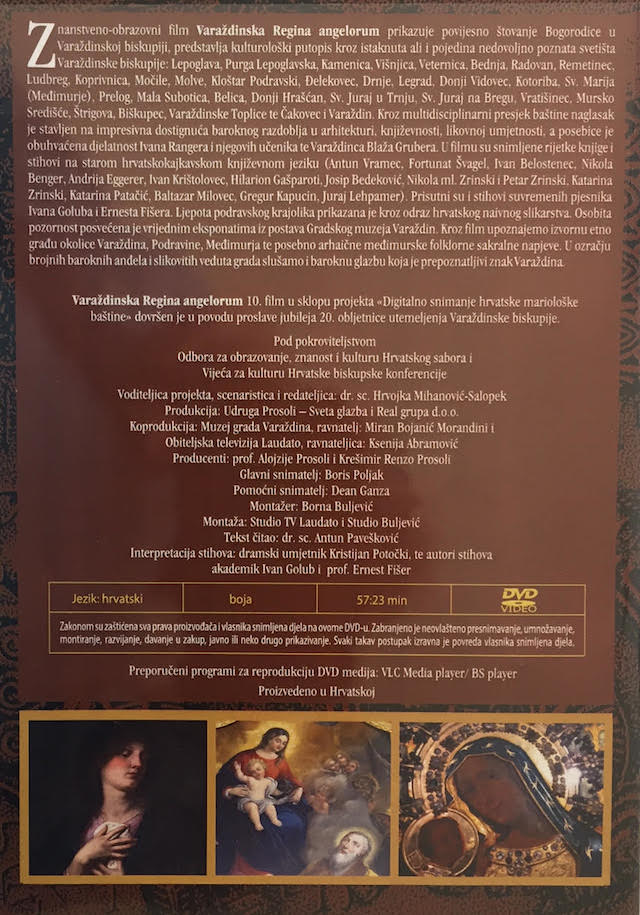

Hrvojka Mihanović-Salopek and Alojzije Prosoli in the city of Šibenik
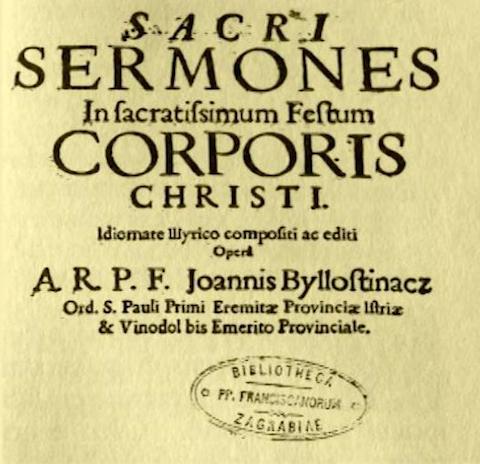
| Dr. Hrvojka Mihanović-Salopek prepared already her tenth DVD covering various aspects of extremely rich mariological heritage among Croatians. This DVD refers to the Varaždin Bishopric on Croatian north. Numerous baroque churches, lavishly decorated by Ivan Ranger and other artists, provide a special touch into the architecture of the city of Varaždin and surrounding towns and villages. A special emphasis is placed on the natural beauties of the region, liturgical and folk melodies, as well as on centuries old Croatian literature. All the photos on this web page are taken from the DVD described in this article. We owe our deep gratitude to Dr. Hrvojka Mihanović-Salopek for her kind permission. |
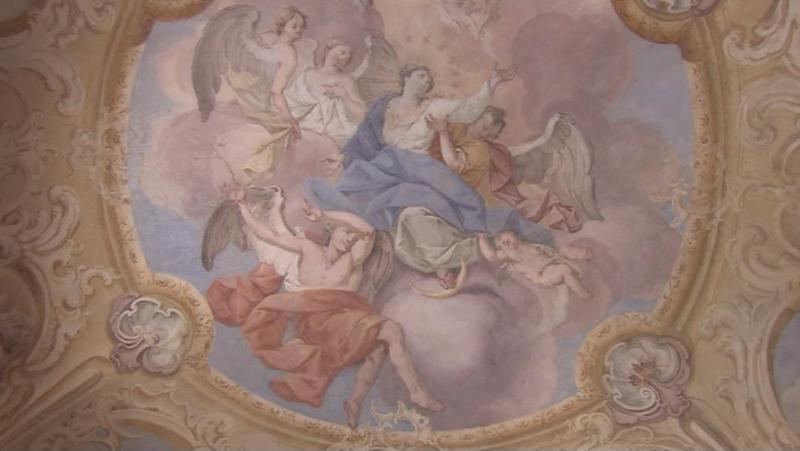
Međimurje is known for specific and very beutiful folk songs, like Vuprem oči.
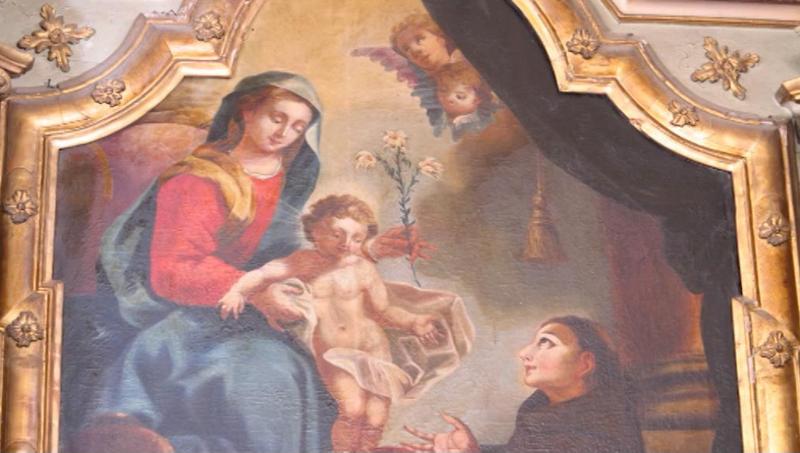
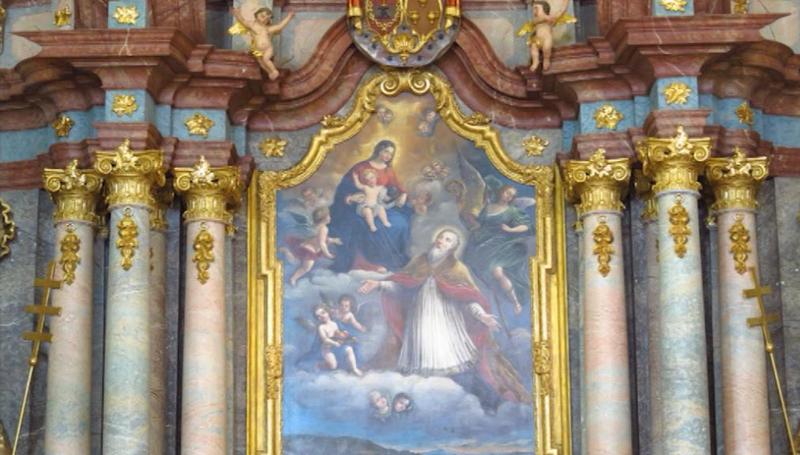
Fortunat Pintarić: Veni Sancte Spiritus
Fortunat Pintarić: Hirtentanz "DUDAŠ"
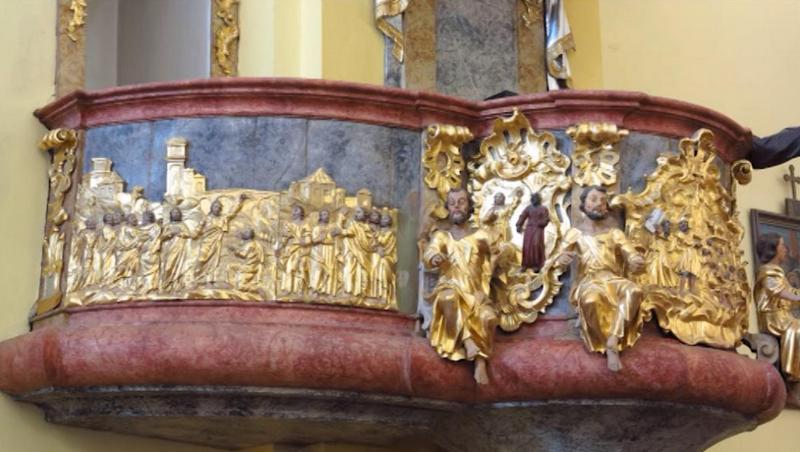
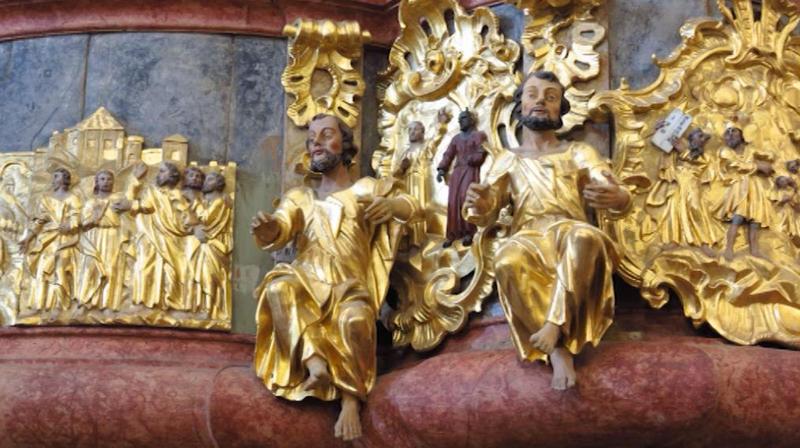
Fortunat Pintarić: Ja verujem, ja se ufam (I believe, I hope)
| Varaždinska Regina angelorum Znanstveno-obrazovni film Varaždinska Regina angelorum prikazuje povijesno štovanje Bogorodice u Varaždinskoj biskupiji, te predstavlja kulturološki putopis kroz istaknuta, ali i pojedina nedovoljno poznata svetišta Varaždinske biskupije: Lepoglava, Purga Lepoglavska, Kamenica, Višnjica, Veternica, Bednja, Radovan, Remetinec, Ludbreg, Koprivnica, Močile, Molve, Kloštar Podravski, Đelekovec, Drnje, Legrad, Donji Vidovec, Kotoriba, Sv. Marija (Međimurje), Prelog, Mala Subotica, Belica, Donji Hrašćan, Sv. Juraj u Trnju, Sv. Juraj na Bregu, Vratišinec, Mursko Središće, Štrigova, Biškupec, Varaždinske Toplice te Čakovec i Varaždin. Kroz multidisciplinarni presjek baštine naglasak je stavljen na impresivna dostignuća baroknog perioda u arhitekturi, književnosti, likovnoj umjetnosti, a posebice je obuhvaćena djelatnost Ivana Rangera i njegovih učenika te Varaždinca Blaža Grubera. U filmu su snimljene rijetke knjige i stihovi na starom hrvatskokajkavskom književnom jeziku (Antun Vramec, Fortunat Švagel, Ivan Belostenec, Nikola Benger, Andrija Eggerer, Ivan Krištolovec, Hilarion Gašparoti, Josip Bedeković, Nikola ml. Zrinski i Petar Zrinski, Katarina Zrinski, Katarina Patačić, Baltazar Milovec, Gregur Kapucin, Juraj Lehpamer). Prisutni su i stihovi suvremenih pjesnika Ivana Goluba i Ernesta Fišera. Ljepota podravskog pejzaža prikazana je kroz odraz hrvatskog naivnog slikarstva. Osobita pozornost posvećena je vrijednim eksponatima iz postava Gradskog muzeja Varaždin. Kroz film upoznajemo izvornu etno građu okolice Varaždina, Podravine, Međimurja te posebno arhaične međimurske folklorne sakralne napjeve. U ozračju brojnih baroknih anđela i slikovitih veduta grada slušamo i baroknu glazbu koja je prepoznatljivi znak Varaždina. Dr. Hrvojka Mihanović Salopek |

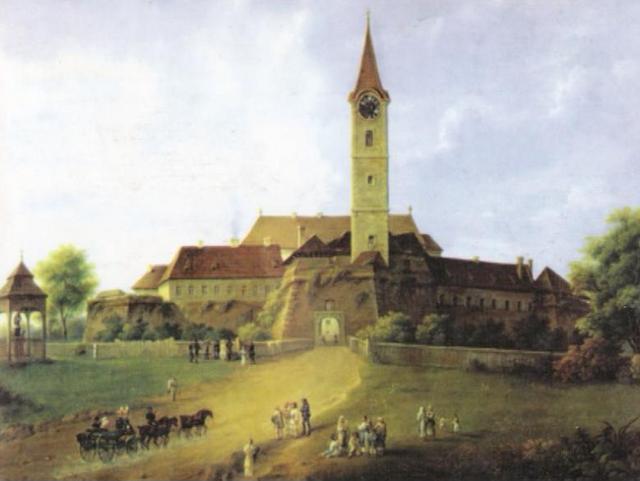
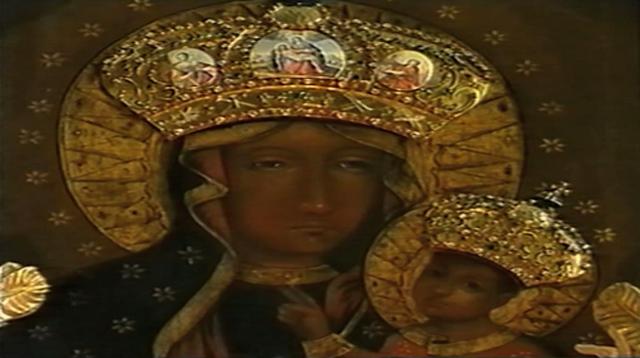
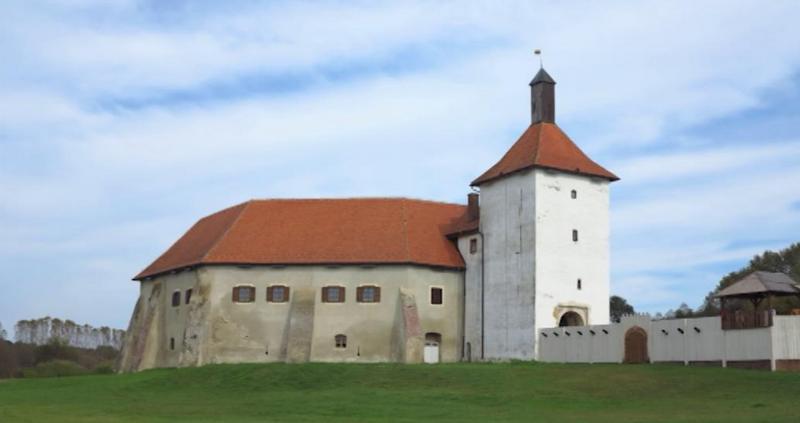
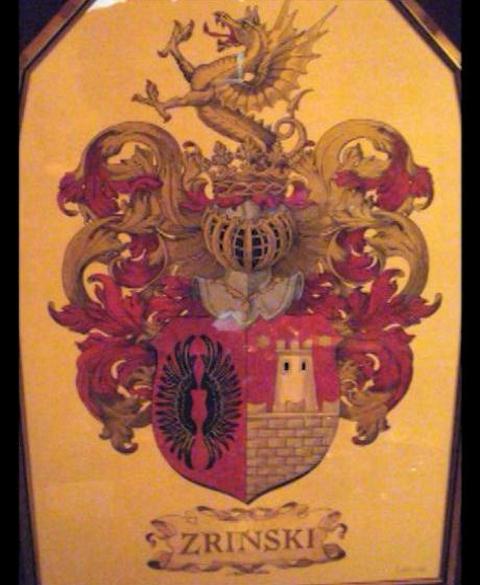
The most famous representative of the family is Nikola Šubić Zrinski, defendor of the Sziget fortress in 1566 against the Turks.
A letter of count Petar Zrinski (1621-1671) to his wife Ana Katarina written in 1671,
translated from Croatian into various European languages.
His wife Ana Katarina Zrinski is the author of Putni tovaruš (Travelling Companion),
a small prayer book written in Croatian, completed in the Ozalj fortress and printed in Venice in 1661.
| A legendary Croatian military commander Nikola Jurisic (born in the town of Senj, 1490-~1545) managed to stop sultan Sulejman the Magnificent (or Great) in 1532 near the town of Köszeg (Güns) at Austrian and Hungarian border. Nikola Jurisic had about 700 Croatian soldiers, the Turks about 32,000 people. The Turkish onsloughts lasted for three weeks. The aim of sultan Sulejman was to occupy Vienna. It is interesting that two years earlier Nikola Jurisic visited sultan Sulejman in Constantinople as a deputy of King Ferdinand. Nikola Zrinski Junior (1620-1664), a Croatian statesman and writer, described in his epic ``The siege of Siget'' the heroic death of his grandfather Nikola Subic Zrinski in 1566, which entered all the historical annals of the 16th century. With his 2500 brave soldiers, mostly Croats, he was defending the fortress of Sziget in southern Hungary against 90,000 Turks.
The Turkish troops were under the sultan Sulejman the Great and supplied by 300 cannons. It took them a month to defeat the Croatian soldiers, who all died a terrible death in the final battle. Despite his promise, the King Maximillian Habsburg did not help Nikola Subic Zrinski. Historians say that the Turks had almost 30,000 dead.
Cardinal Richelieu, the famous French minister at the court of King Lui XIII, wrote the following: A miracle was necessary for the Habsburg Empire to survive. And the miracle happened in Sziget. The above mentioned epic was written in the Hungarian language. Though written by the Croat, it is regarded to be one of the greatest achievements of the early Hungarian literature. See also here (in Croatian). Nikola Subic Zrinski, his oath taken in Siget in 1566., and his original signature in the Glagolitic script. Ivan Zajc has composed the opera Nikola Subic Zrinski, which is very popular in Japan, especially its tune "U boj, u boj!" (on this web page you can listen to a Japanese choir singing this song in Croatian!).
Among innumerably many Croatian captives in Turkish slavery, there were at least two that deserve special attention:
It is not widely known that in the 16th century the town of Bihac was Croatian capital. Hasan-pasa Predojevic, an islamized Croat, occupied Bihac in 1592. About 2000 people were killed and 800 Croatian children taken to slavery and educated in the spirit of Islam. A real turning point which meant the beginning of the fall of the Ottoman expansion to Croatian historical lands (and to Europe) was a defeat of Hasan-pasa Predojevic in a battle at Sisak near Zagreb in 1593, which echoed in the whole of Europe. Source www.croatianhistory.net |
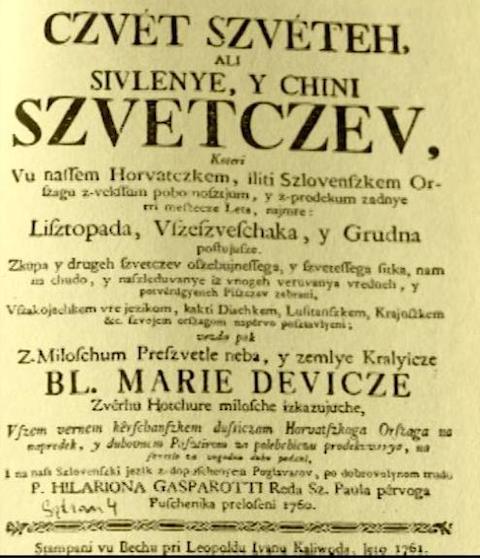
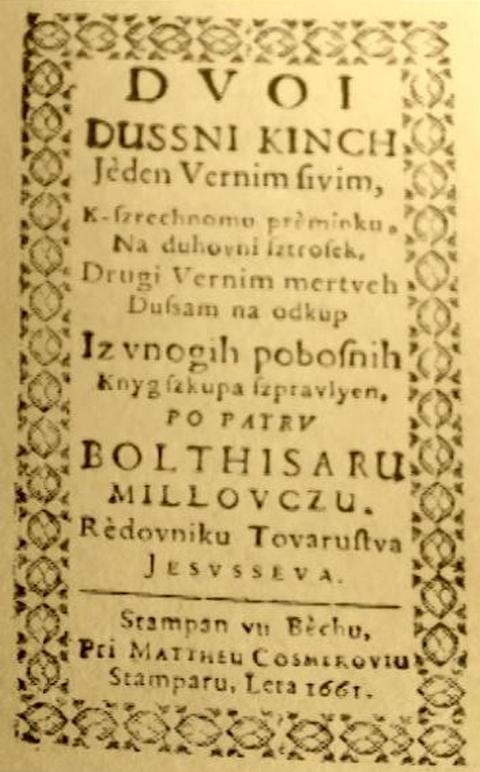
He also published Dussni vert (Garden of Soul) in Vienna in 1664.
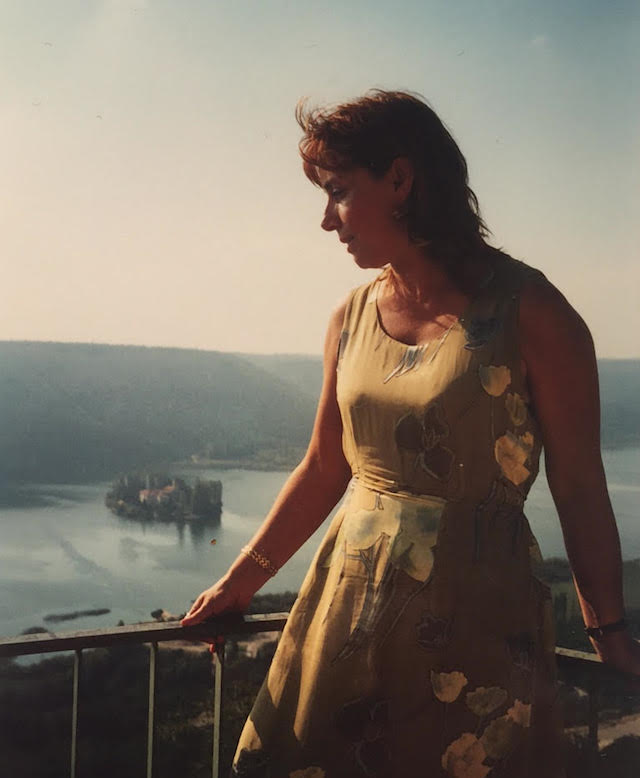
Dr. Hrvojka Mihanović-Salopek over the Krka river (National park),
with a view to the Franciscan Monastery on the islet of Visovac
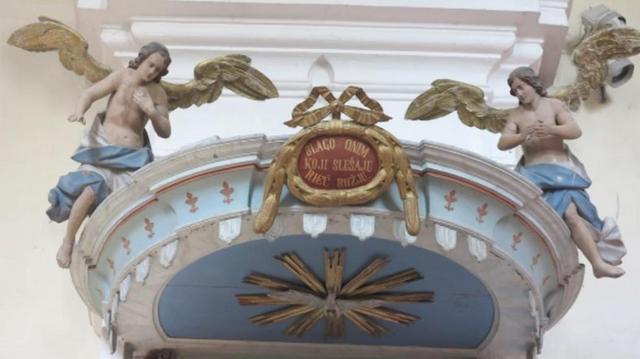
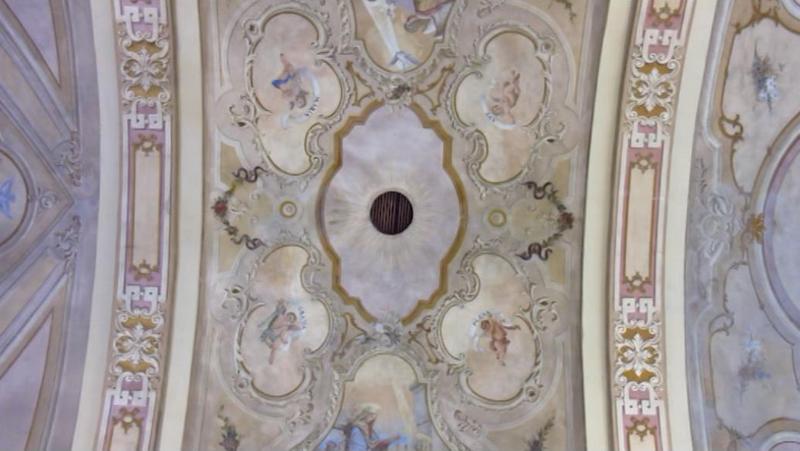
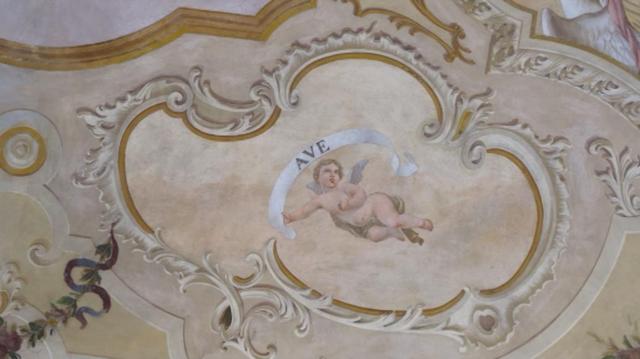
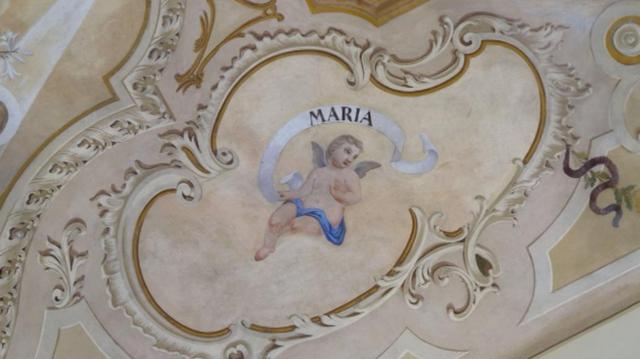
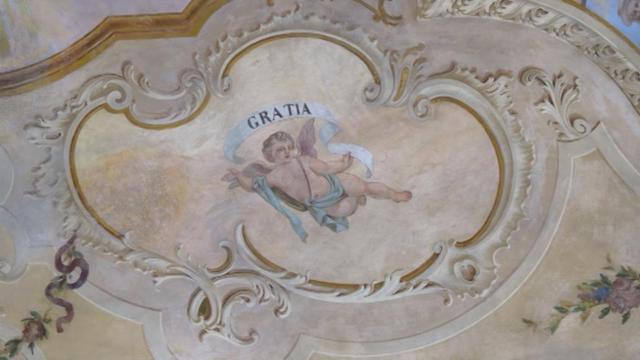
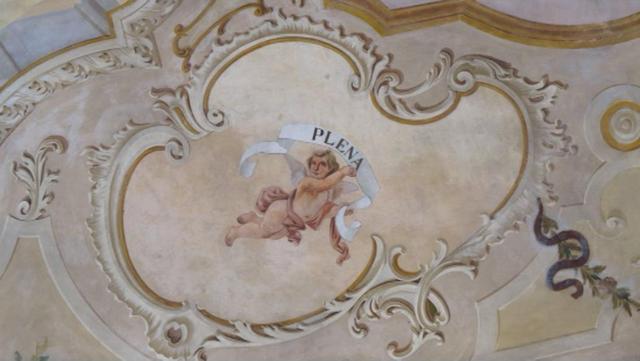
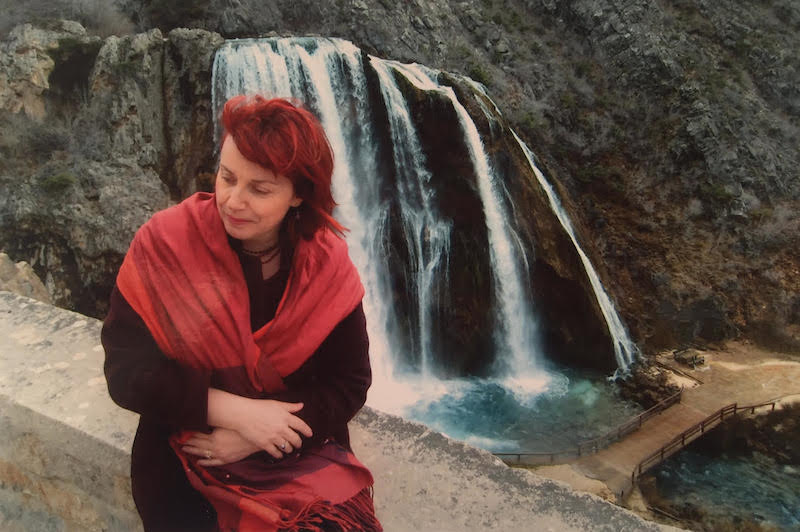
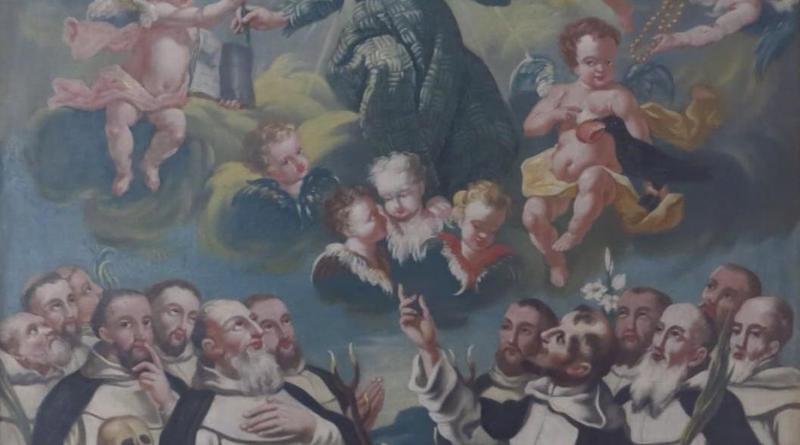
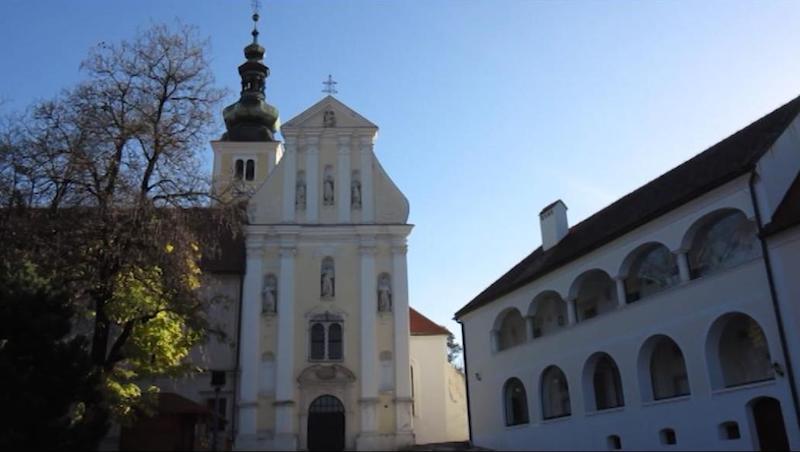
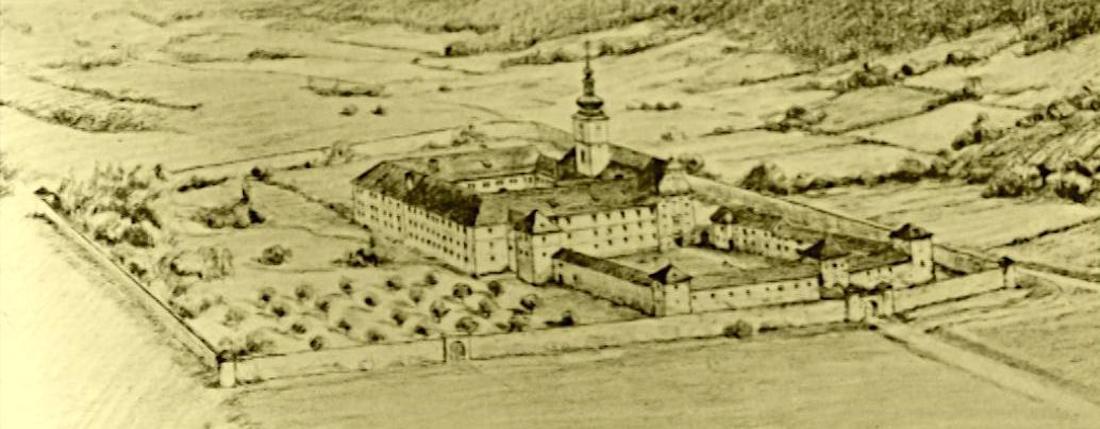
The town is known for its old tradition of lace-making.
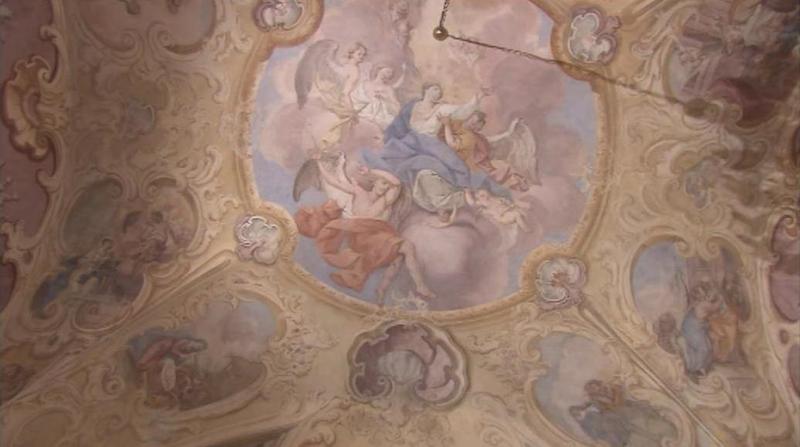
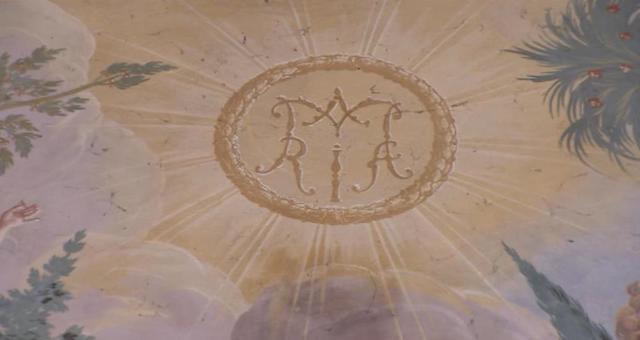

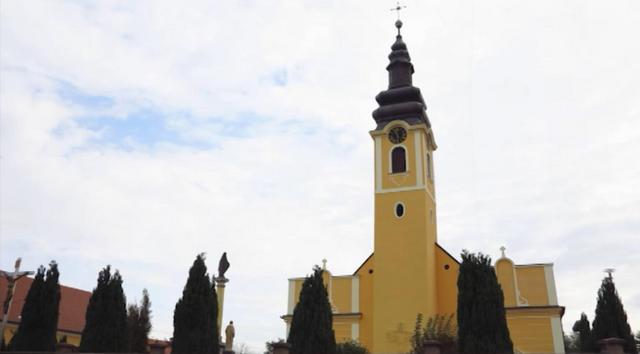
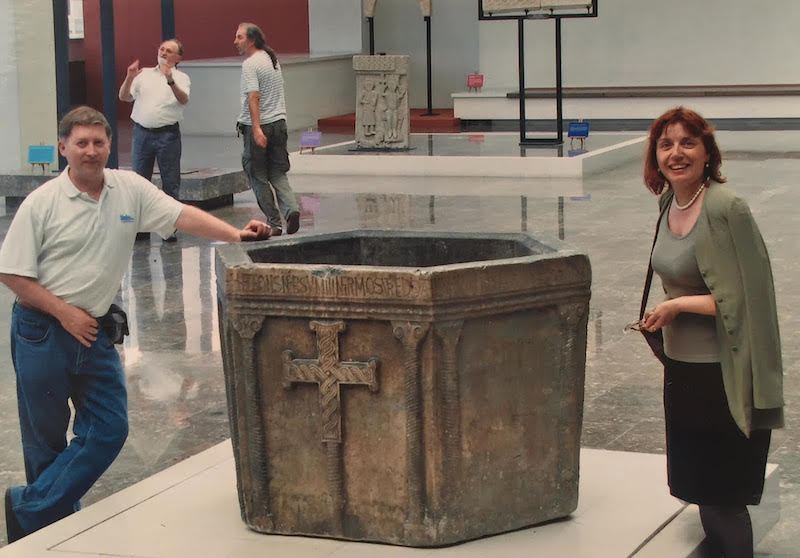
Hrvojka Mihanović Salopek and Dean Ganza by the Baptismal Font of Croatian Prince Višeslav from arround the year 800 AD,
kept in the Museum of Croatian Archaeologoical Antiquities in the city of Split.
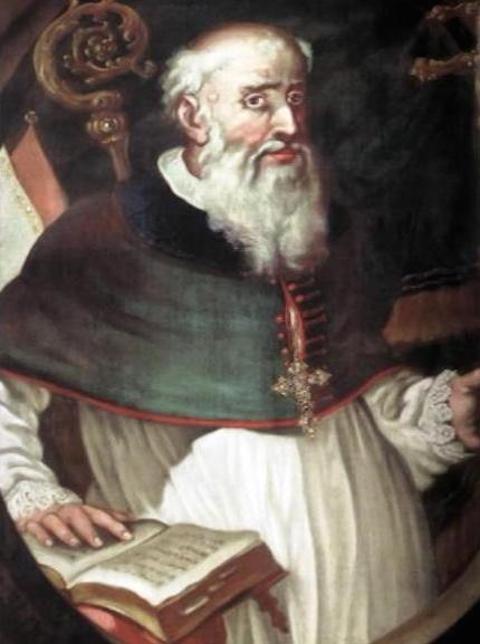
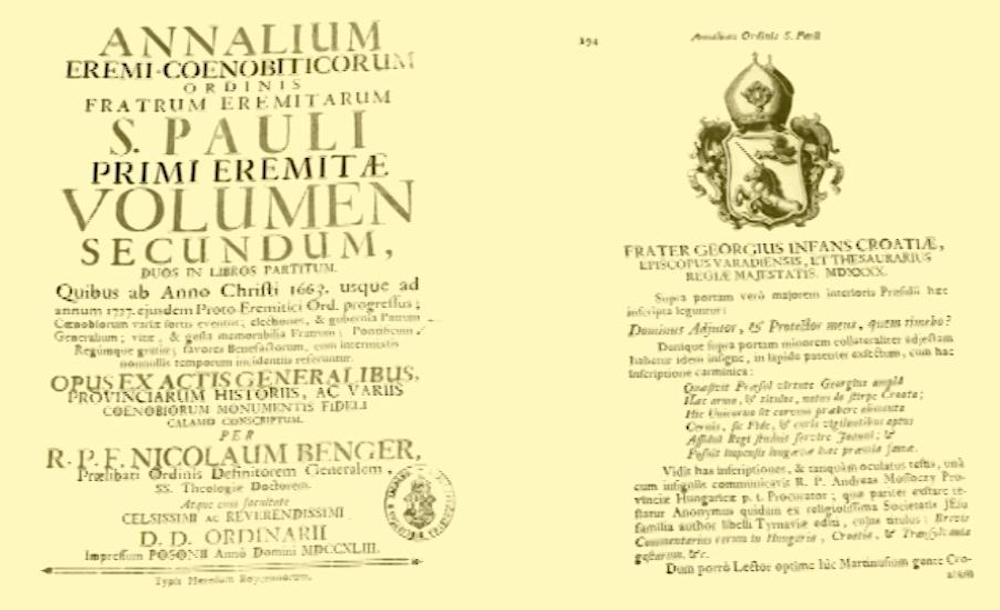
wrote his History of the Paulist order in the Latin language in 1743, published in the city of Bratislava in Slovakia.

describing Father Georgius, INFANS CROATIAE (child of Croatia).
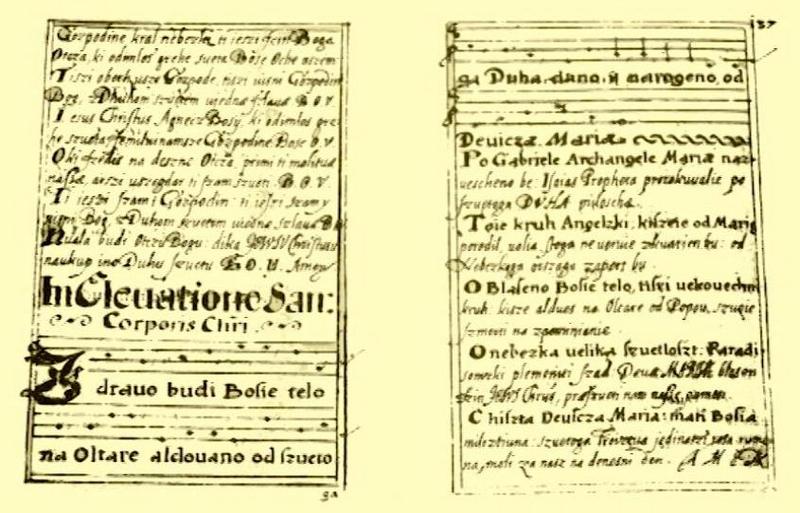
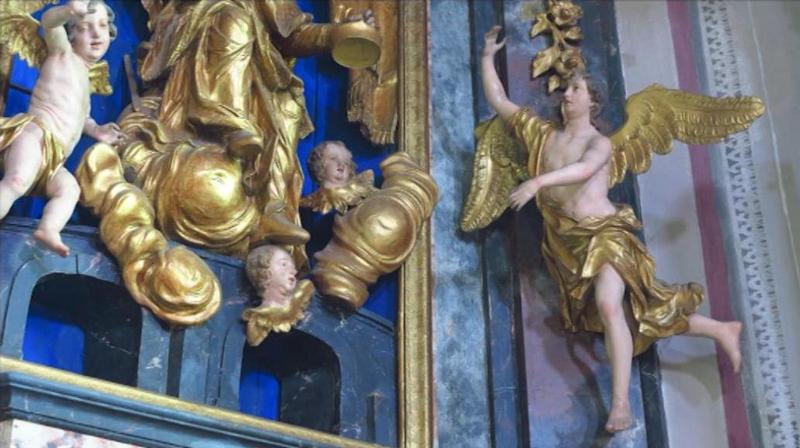
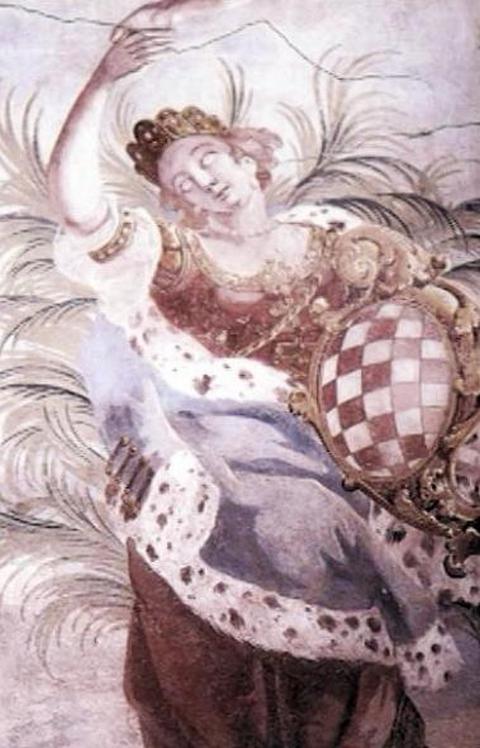
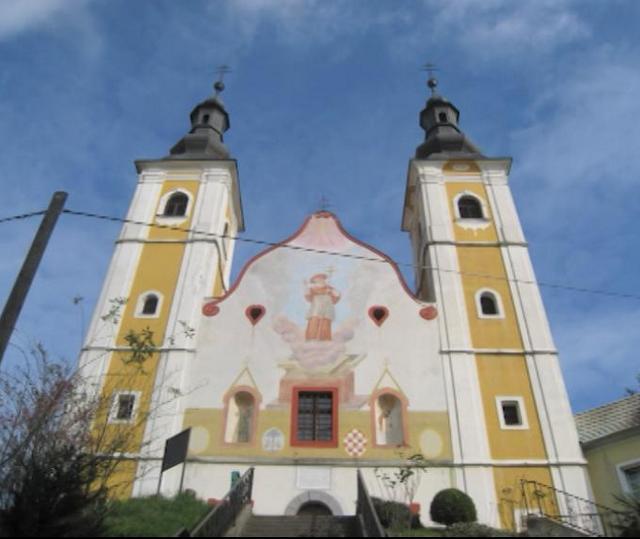
and that Štrigova is in fact Stridon, his birthplace. It is beautifully decorated by Ivan Ranger.
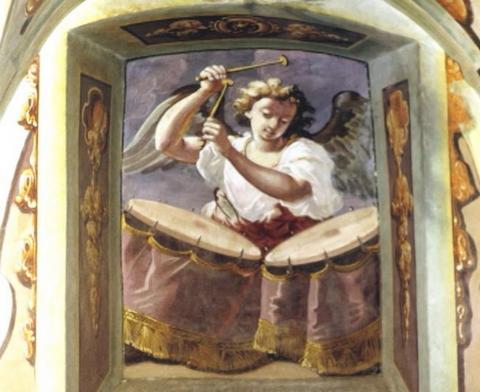
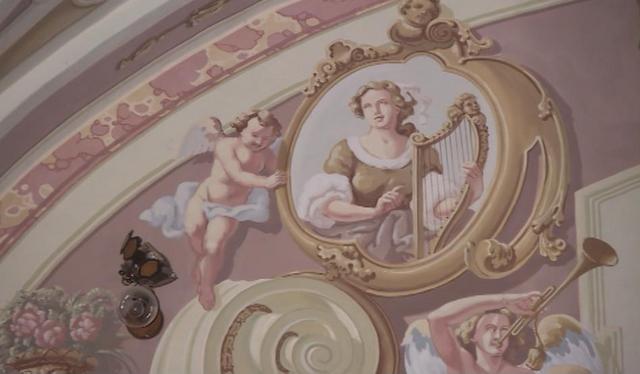

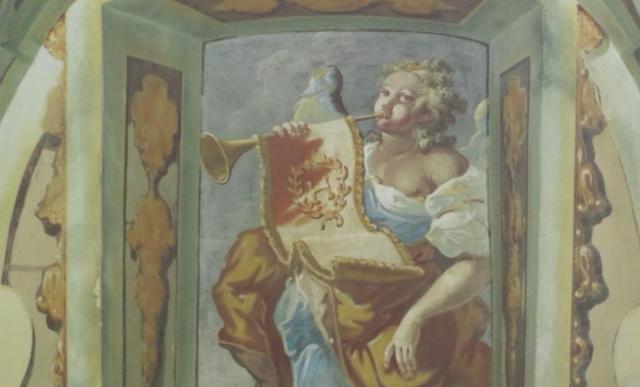
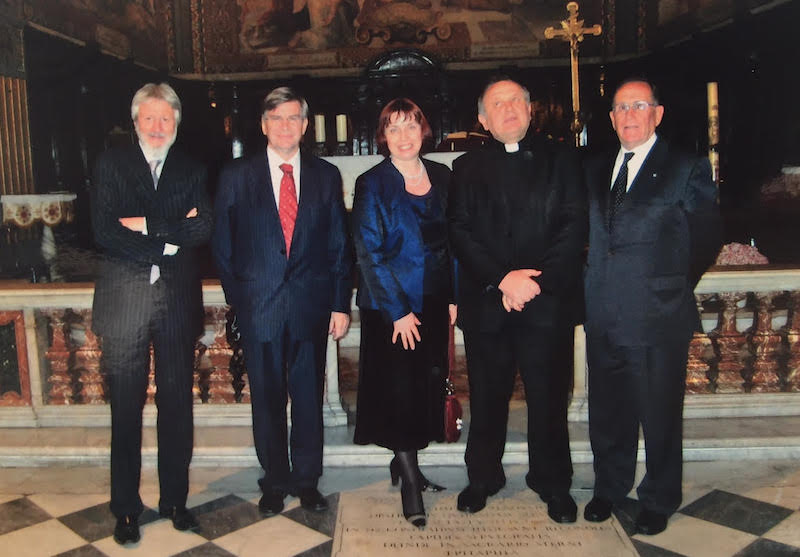
Mons. Jure Bogdan (the then rector of the Pontifical Croatian College of St. Jerome in Rome), Ive Livljanić,
presenter of the DVD and the first ambassador of the Republic of Croatia to the Holy See.
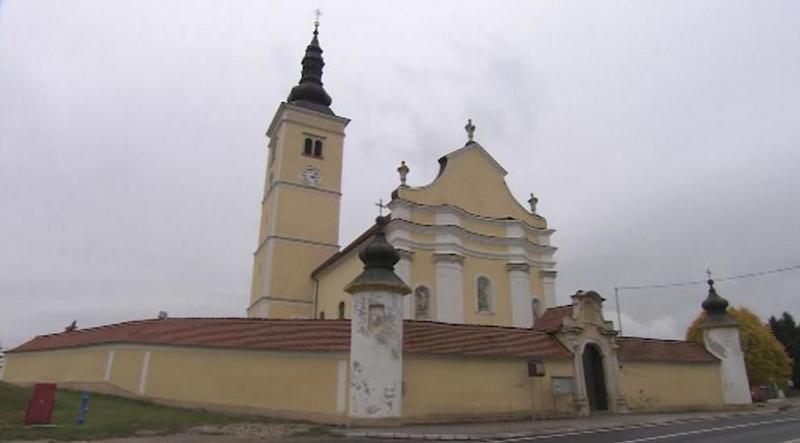
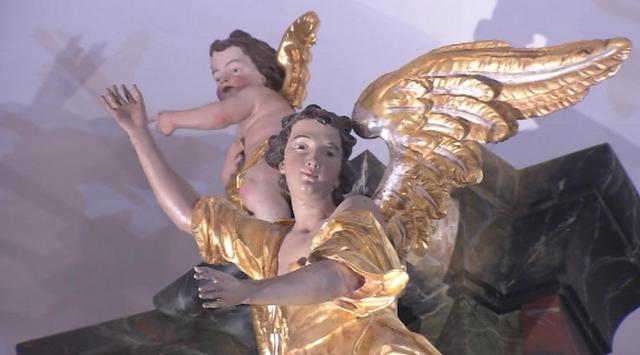
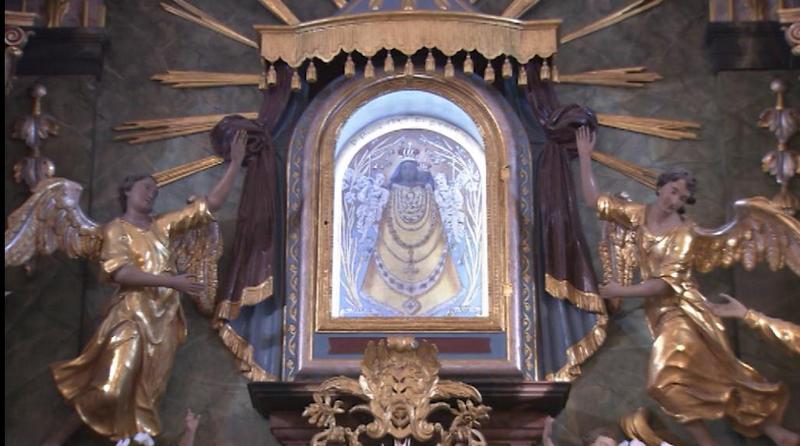
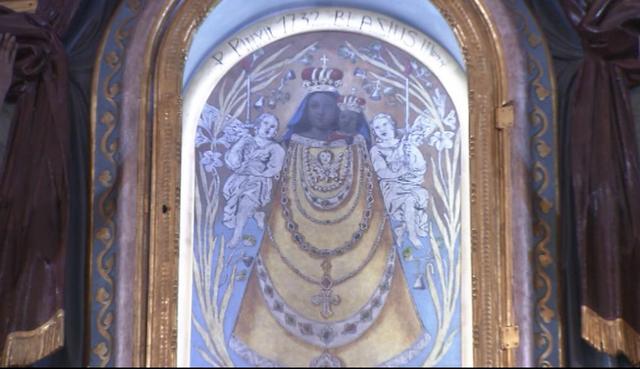
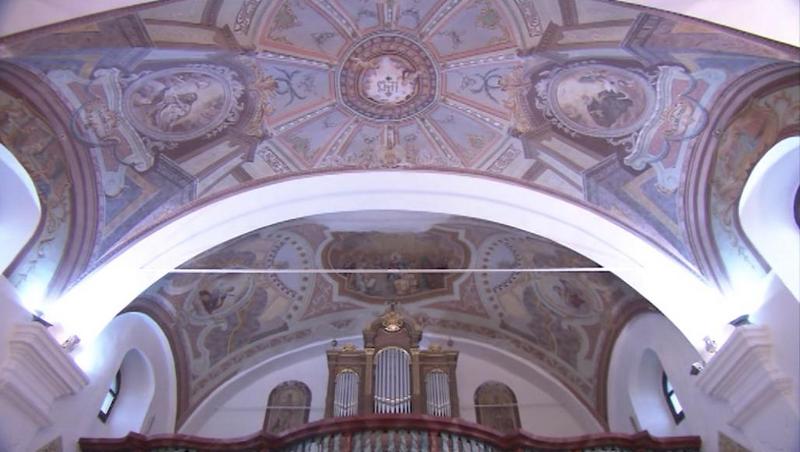

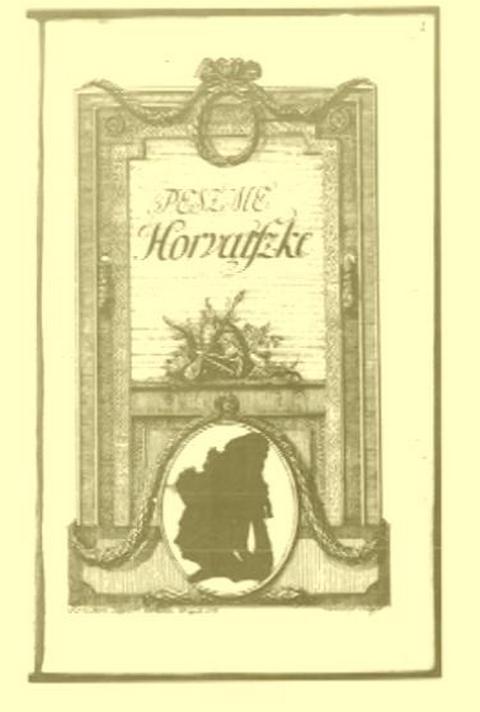
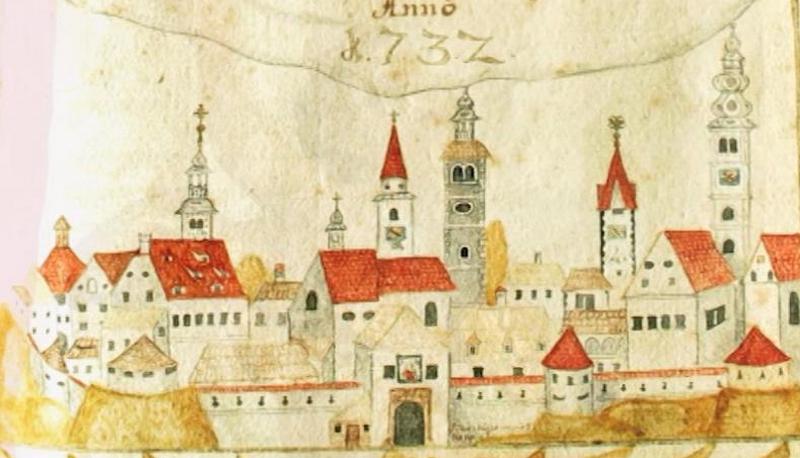
The city of Varaždin in 1732. In the period of 1767-1776, Varaždin was the capital of Croatia,
in which also sessions of Croatian Parliament (Sabor) were taking place.
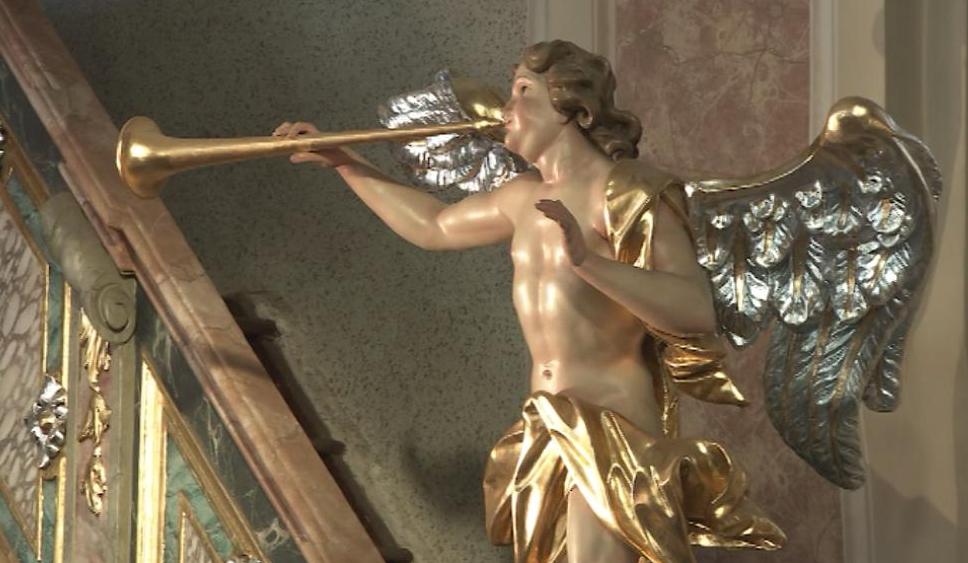
An angel playing trumpet in Varaždin. In Varaždin, there is an interesting Museum of Angels.
Varaždin is the birthplace of the greatest Croatian classical guitarist of the 19th century - Ivan Padovec.
Fortunat Pintarić: Pobjedni dan slavimo (Victorious Day We Celebrate)
Apostolic Journey to Croatia for the National Day of Croatian Catholic Families
Holy Mass on the occasion of the National Day of Croatian Catholic Families
Zagreb Hippodrome, 5 June 2011
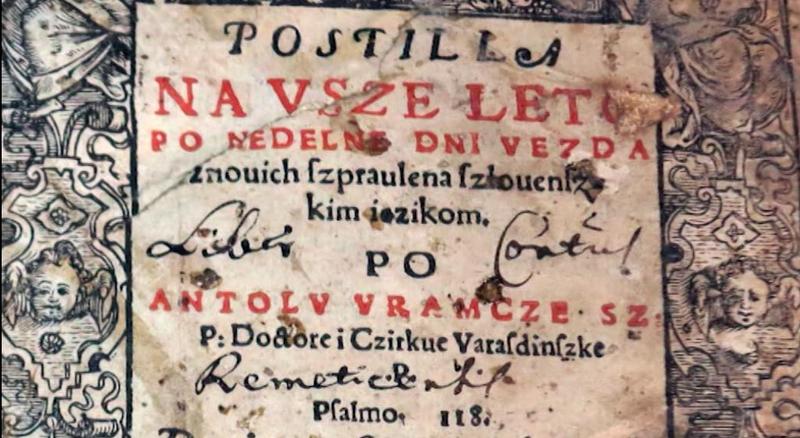
Postila by Antun Vramec (1538-1588), published in 1586 in Croatian language.
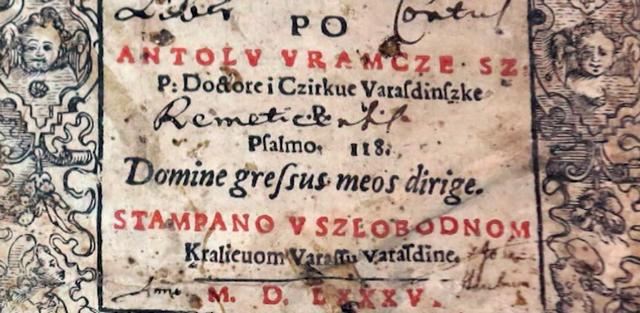
Postilla by Anton Vramec printed in 1585 in the Royal city of Varaždin.
O. Fortunat Pintarić: Rondo in C-major, Krešimir Lulić on harmonica (Music School of Elly Bašić), Croatian Music Institute in Zagreb.

Opus Selectum by father Fortunato Svagel,
printed by Croatian Royal Typography in Zagreb.
Glazba za kraljeve i siromahe; Dvigrad Festival, Kanfanar 2015.
Lidija Horvat-Dunjko (soprano), Marin Zokić (trumpet), Mario Penzar (pipe organ)
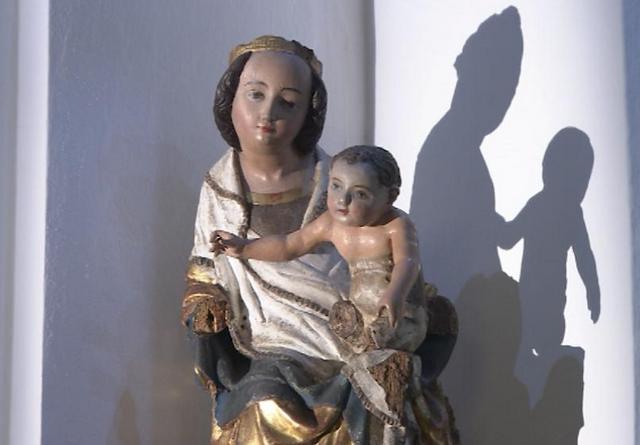
Mother of Mercy in Varaždin dating from the 15th century.
In 1703, the Ursuline Sisters in Varaždin founded the first primary school for girls in Croatia.
Natalija Imbrišak from Koprivnica playing pipe organ in Varaždin
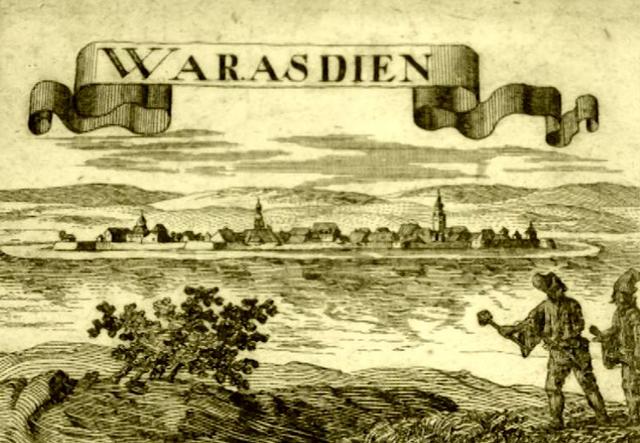
Drawing of old Varaždin. The city is mentioned for the first time as early as in 1181.
Zbor mladih Varaždinske biskupije (Choir of the Varaždin Bishopric) - Padaj s neba (Fall from the Skies)
Croatian Advent folk song, performed in the Varaždin Cathedral in 2007.

The Varaždin Bishopric is the area of birth of the fenomenon of Croatian Naive Art, which often has sacral elements,
like in the works of Ivan Lacković Croata.
Formated for CROWN by Darko Žubrinić
Distributed by www.Croatia.org . This message is intended for Croatian Associations/Institutions and their Friends in Croatia and in the World. The opinions/articles expressed on this list do not reflect personal opinions of the moderator. If the reader of this message is not the intended recipient, please delete or destroy all copies of this communication and please, let us know!
